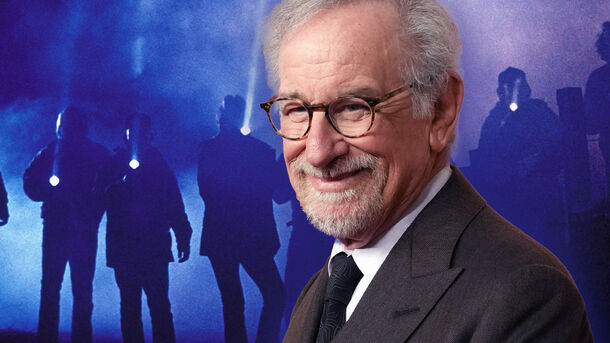This Forgotten Spielberg's Sci-Fi Thriller Made Just $1 Box Office Profit

Hollywood's most legendary producer had a legendary start.
Summary
- Steven Spielberg made his first full length movie when he was only 17.
- He used actors from his local high school.
- Elements from the movie were eventually re-purposed for a major Hollywood blockbuster.
- Firelight made back its budget plus $1.
How Did It Begin?
The year was 1964, and a young cinephile was dreaming of Hollywood. Although 17-year old Steven Spielberg wasn't yet old enough to drink or sign a contract, he was ready to direct his first feature-length film.
Spielberg had been obsessed with the movies from a very young age. His first film, about a train wreck, was shot when he was just 12 years old. It was a short, filmed on a home camera and using model trains. By age 13, Spielberg had moved on to a 40-minute war epic titled Escape to Nowhere, filmed using his classmates as actors. Escape to Nowhere won him top prize in a statewide competition.
By the time Spielberg was feeling ambitious enough to try for a full movie, he had made more than fifteen short adventure films, all shot on a Super8 camera.
Firelight
Spielberg wanted to make a full-length movie partly to fulfill his own ambition and partly as a calling card for studios. He wrote a script called Firelight, and cast it using students from his high school (who were surely used to his film projects by now). This team of volunteer actors included his own sister Nancy.
Spielberg wrote and directed the script, but he also composed the music on his clarinet; his mother then transposed the music, and it was recorded by the school marching band. Spielberg used his own home for the locations, as well as some unused scrub land nearby.
What's It About?
In the fictional town of Freeport, coloured lights begin to appear in the sky. They are followed by the mysterious disappearance of animals, humans, and objects from around the town. There doesn't seem to be any rhyme or reason to the abductions – those taken include a young woman, a dog, and an entire unit of soldiers.
A group of scientists headed by Tony Karcher (Robert Robyn) and UFO believer Howard Richards (Clark Lohr) come to Freeport to investigate the disappearances. They also have their own, private issues that they're dealing with: Karcher is having troubles in his marriage, and Richards is fighting to convince the CIA to take the possibility of alien life seriously. At the end of the film, the aliens (appearing as three shadows) reveal what it is they're after: they want to create a 'human zoo' on their home planet.
The Disappearing Film
We didn't put a spoiler warning on the above section because it's literally impossible to find the movie today. The most you can watch is three minutes and fifty seconds of it, and Spielberg is fine with that. When interviewed for Inside the Actors Studio decades later, the director laughingly said, 'The film looked like it was directed by a kid, but acted by grown-ups.'
Still, Spielberg used the movie to try to promote himself to a few movie producers. Though that didn't directly lead to anything, he later reused elements of Firelight in his second major Hollywood film, Close Encounters of the Third Kind.
A Tiny Box Office Victory
Spielberg directed Firelight with a budget of $500, donated by his very supportive father. (As a budget for a movie that's tiny, but as a gift to a teen it's pretty generous: that would be over $4,000 in today's money.)
Ever ambitious, Spielberg managed to get the finished Firelight shown at a local movie house for exactly one night. He sold tickets to friends, family, and the general public for $1, and amazingly sold $501 worth of tickets – a box office victory!
It was only 9 years later that Spielberg directed Jaws, a movie that cost $9 million to make – and earned more than $270 million at the box office.
